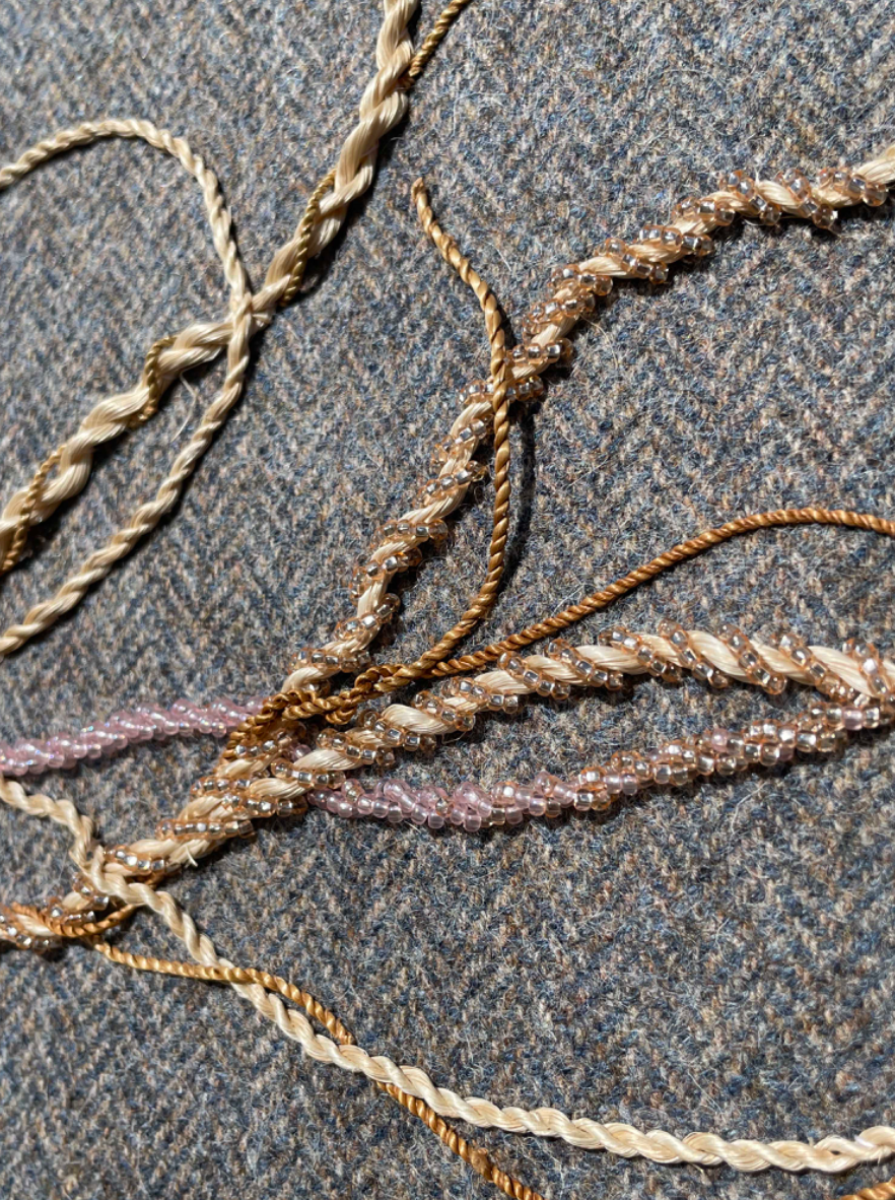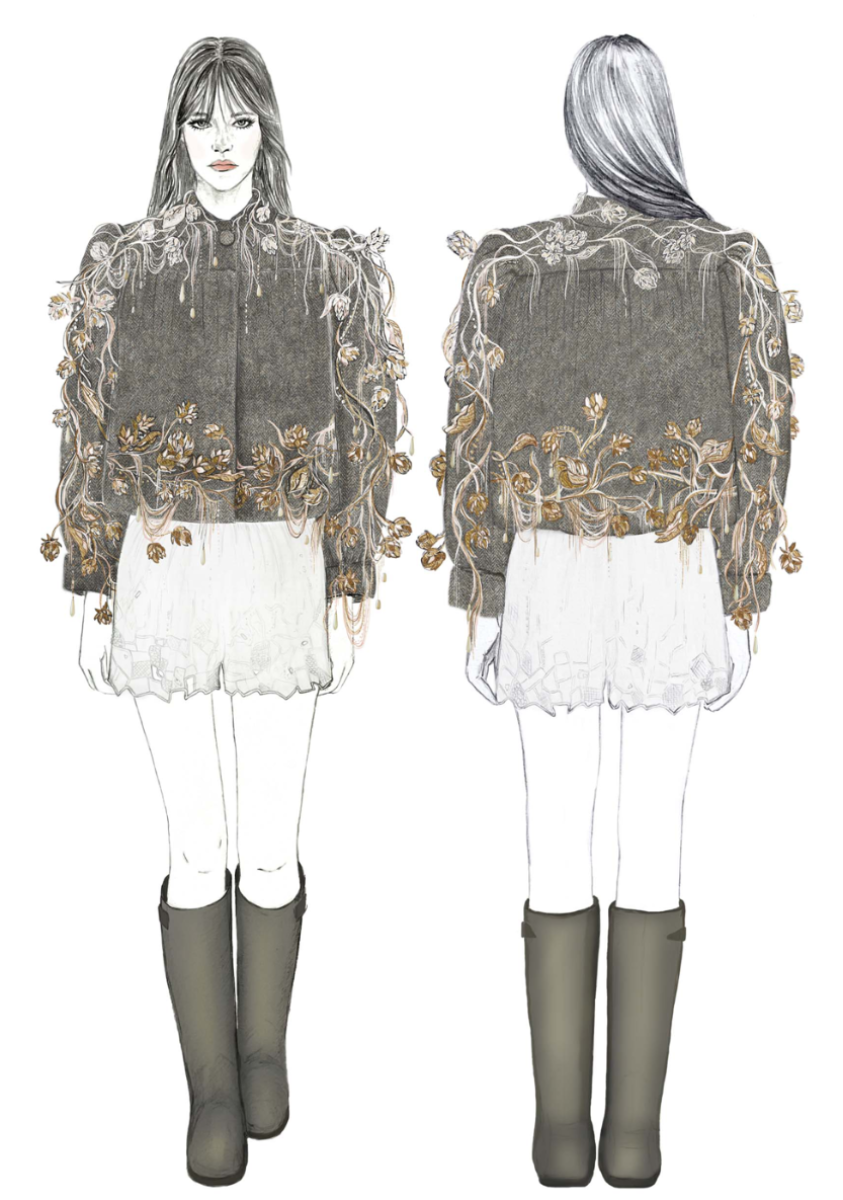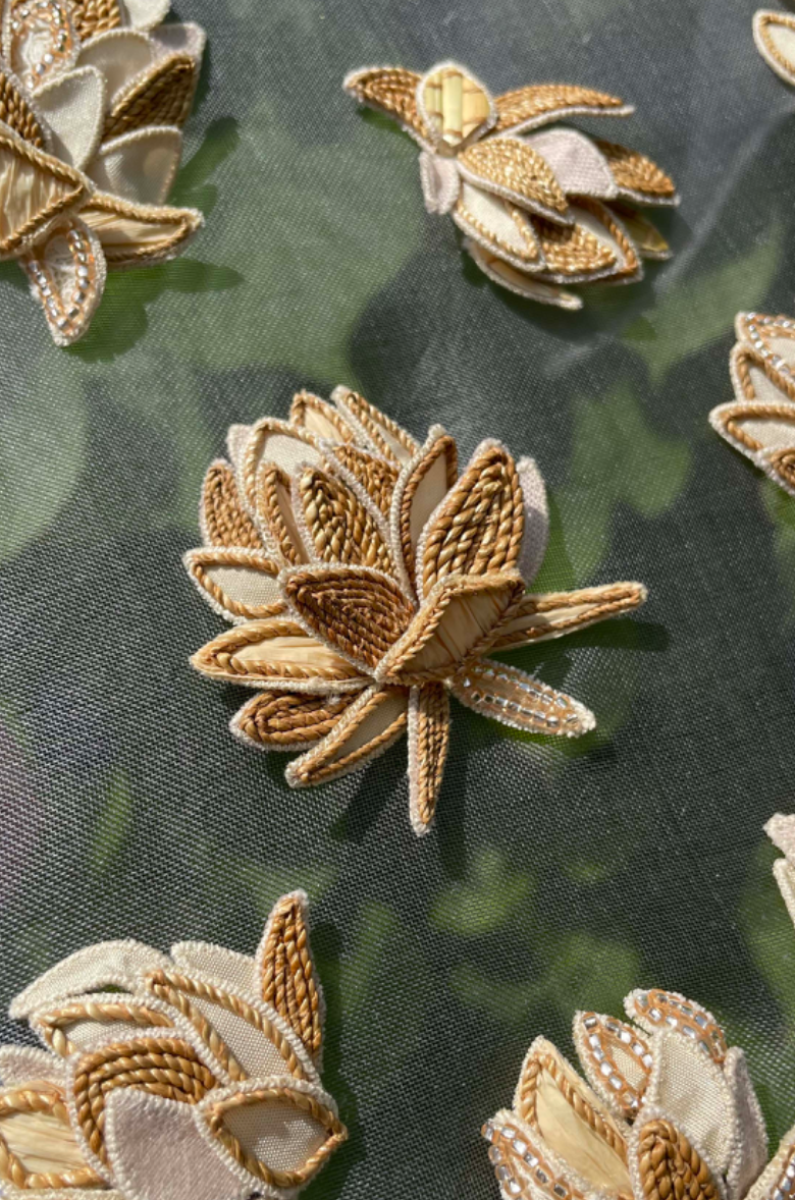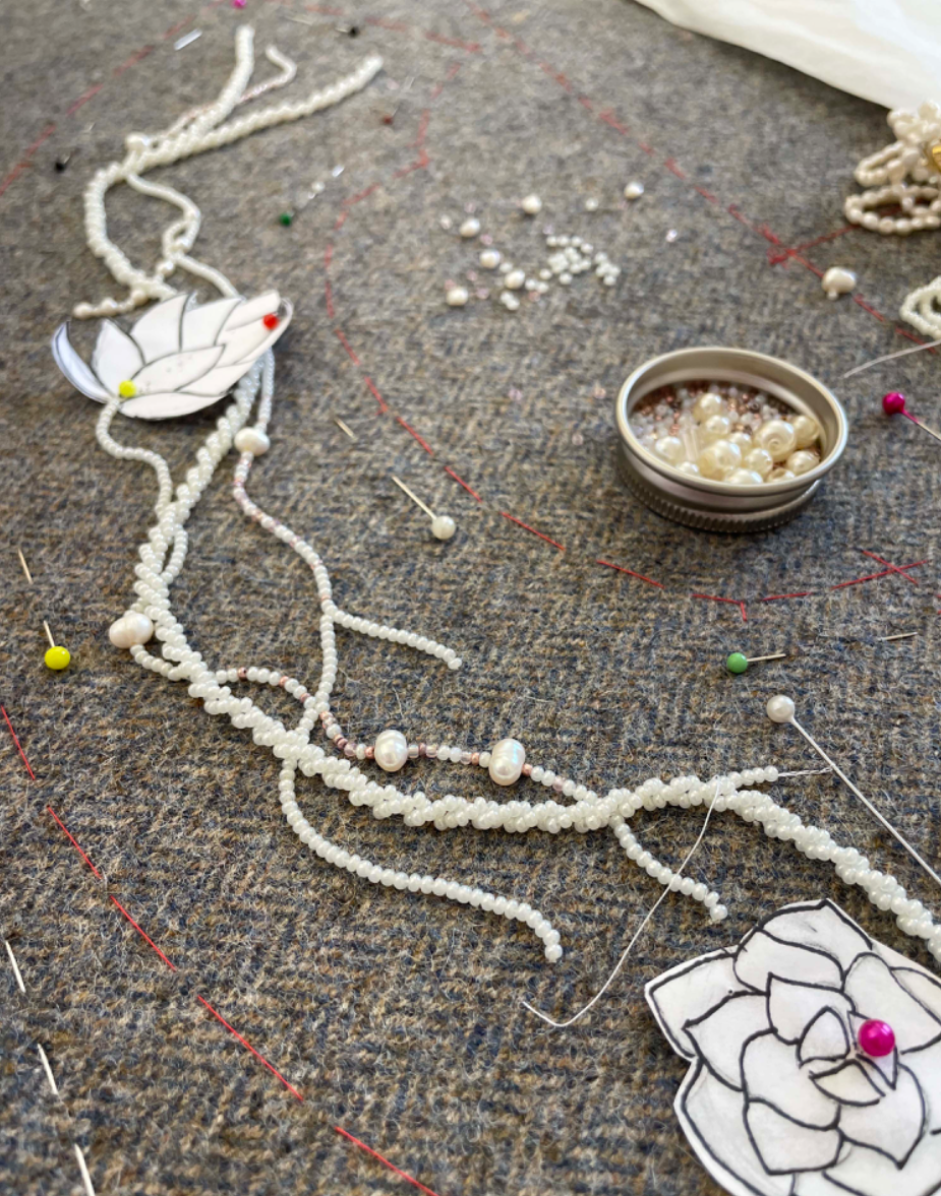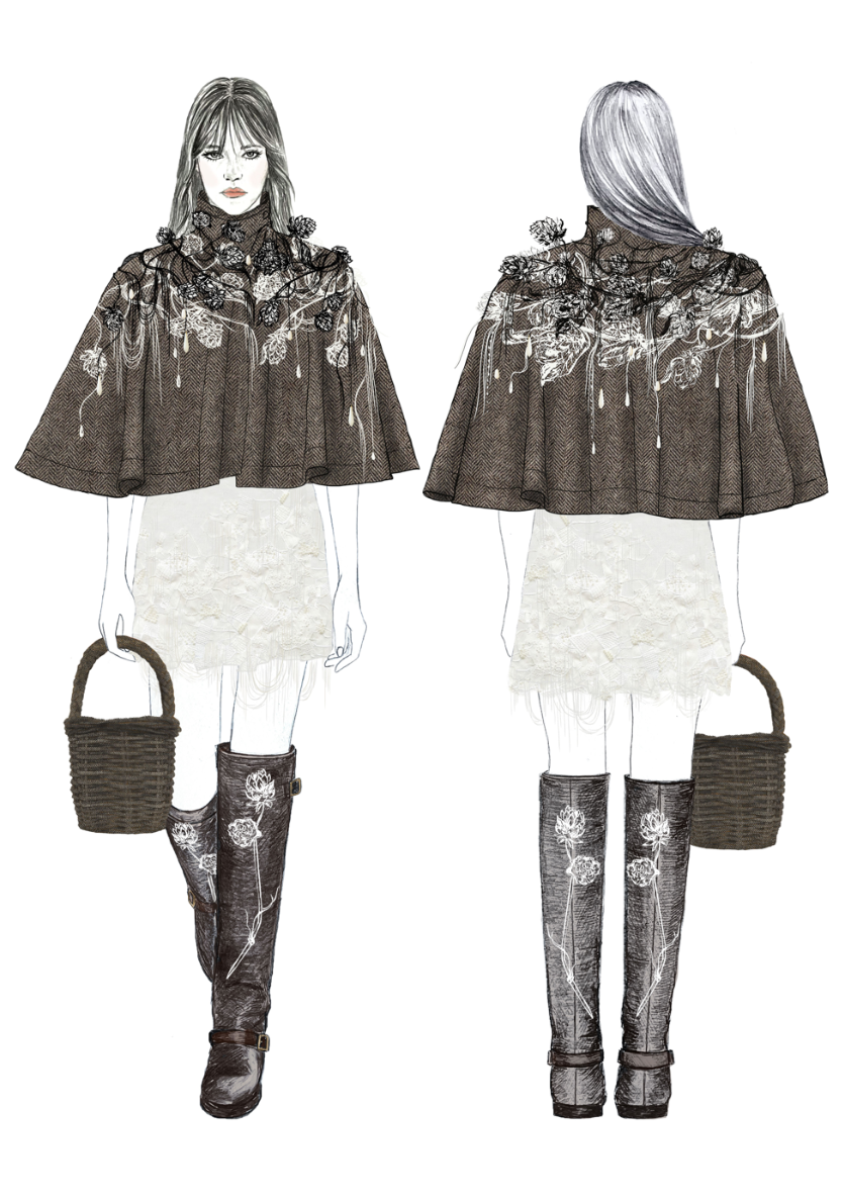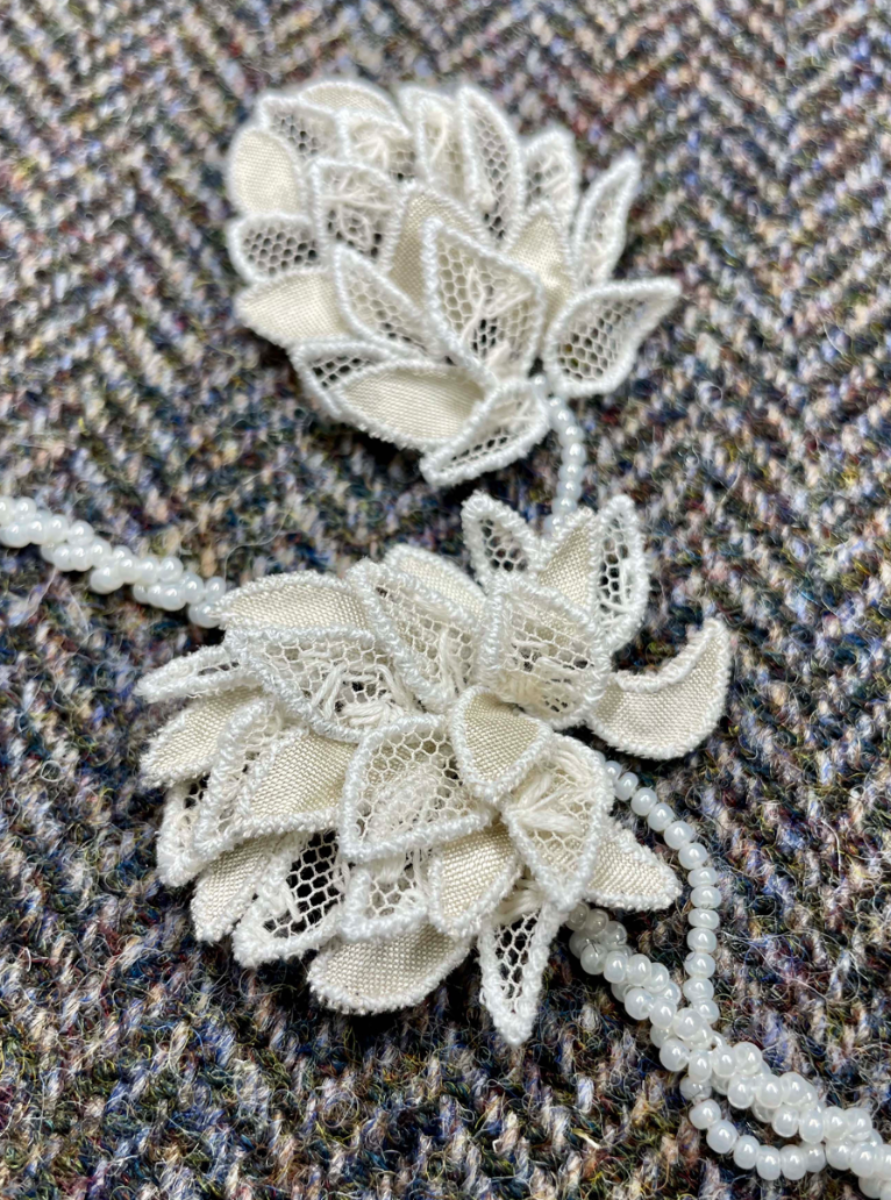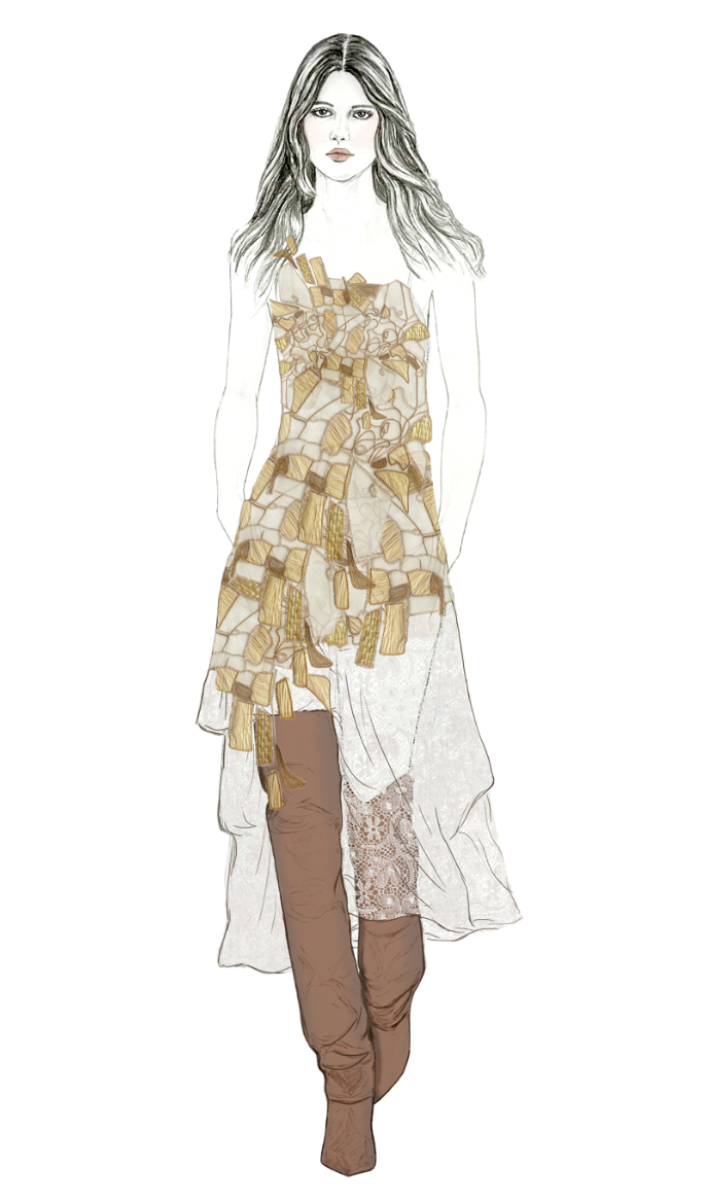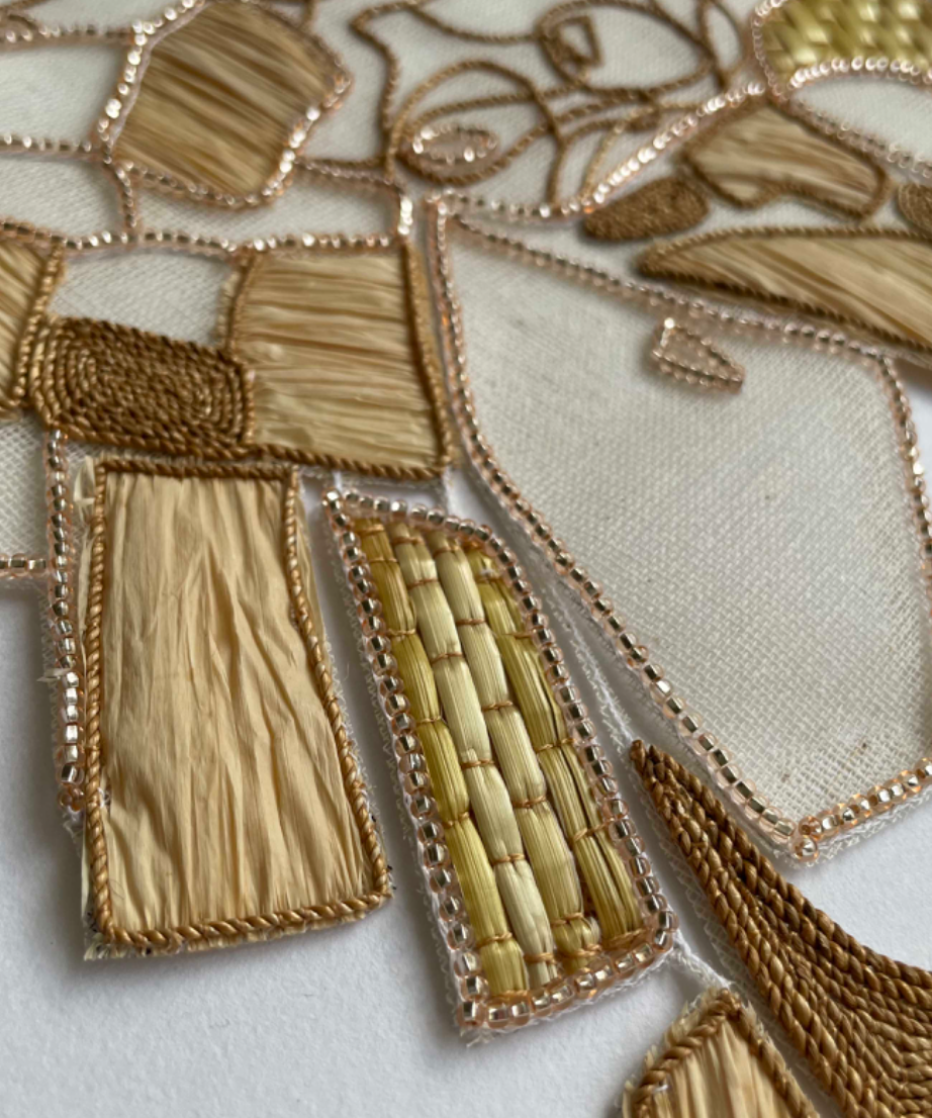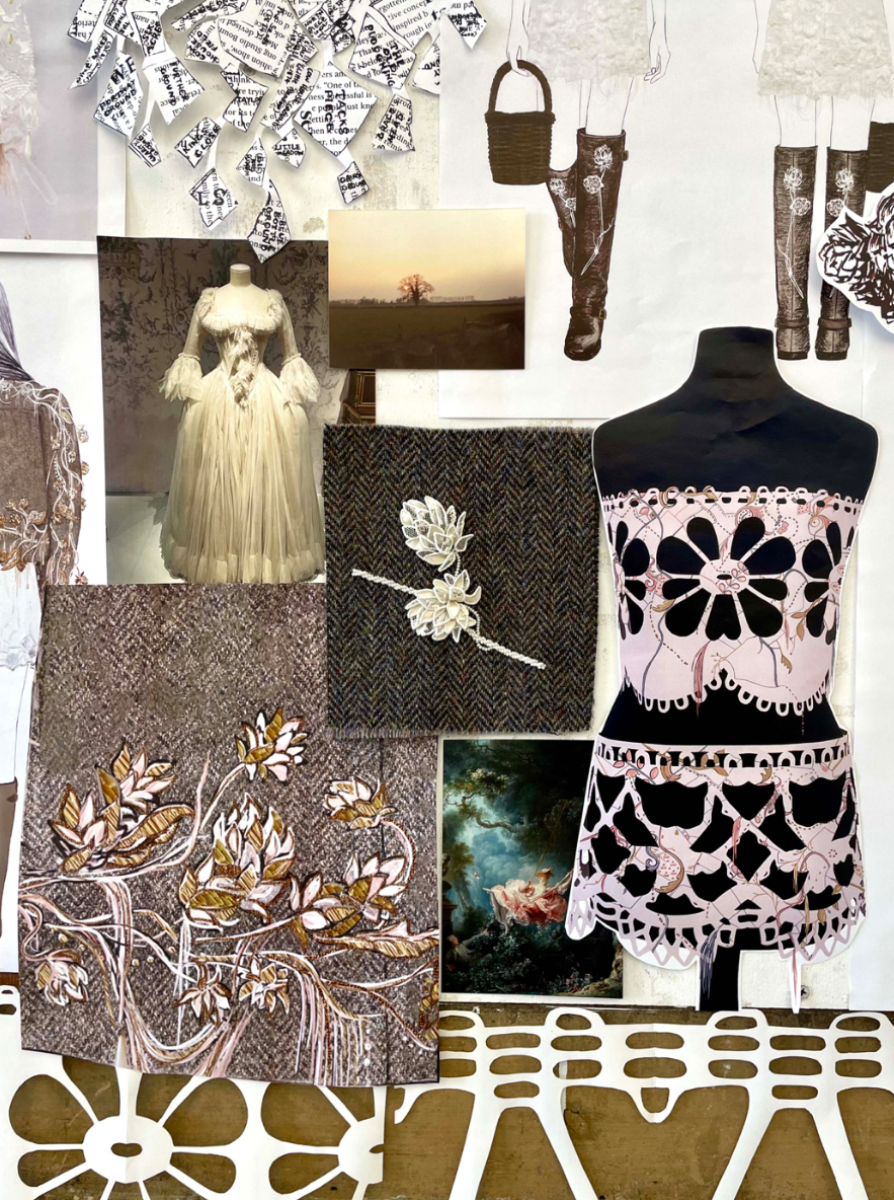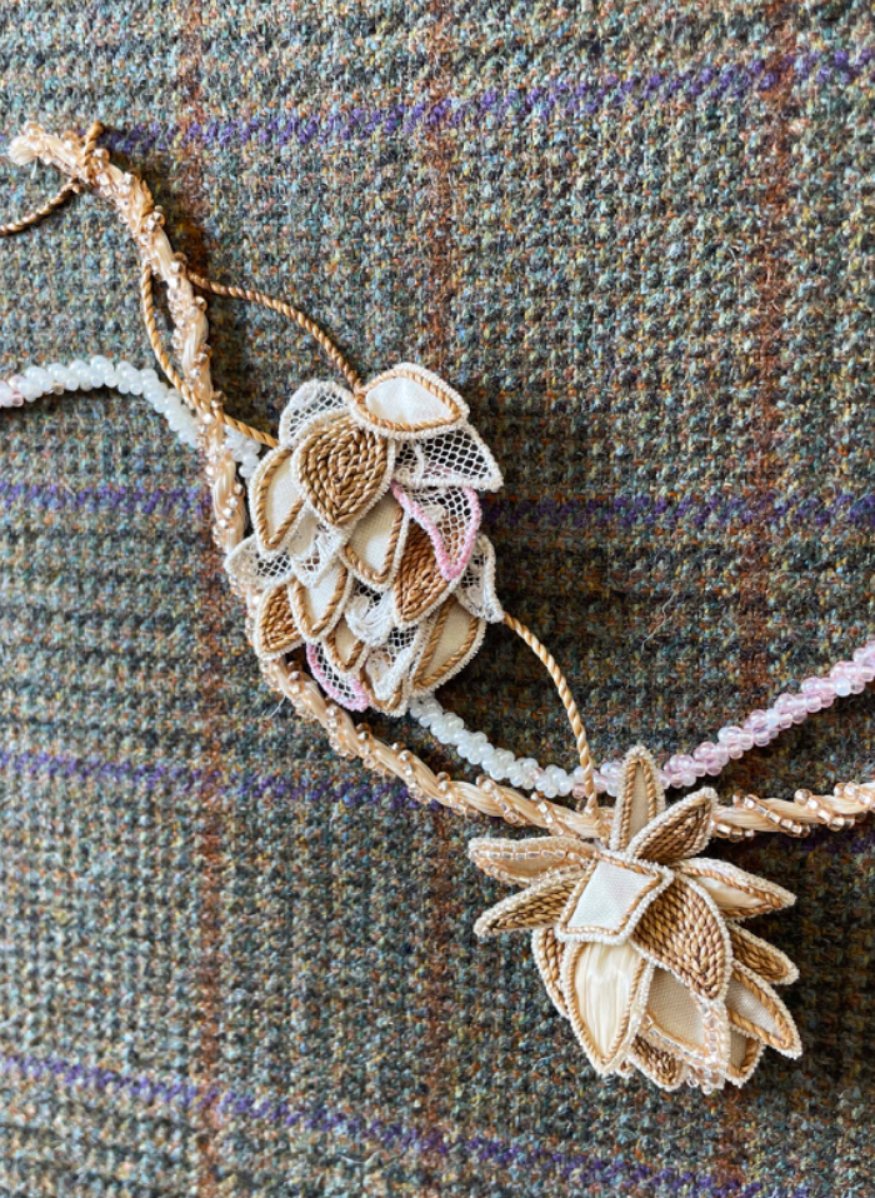Stella Buckingham
ba (hons) Hand embroidery
Royal School of Needlework
Graduates: 2025
Specialisms: Embroidery / Textiles for Fashion / Fashion Illustration
My location: Oxford, United Kingdom
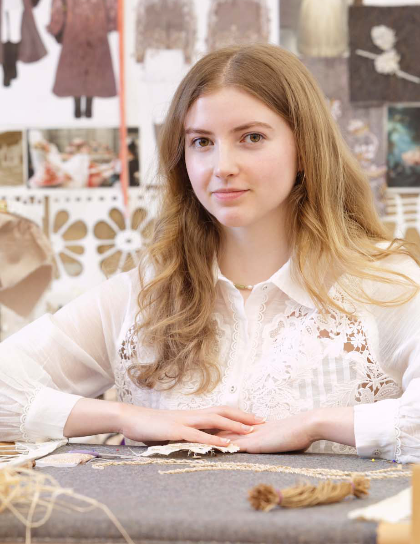

Stella Buckingham

First Name: Stella
Last Name: Buckingham
University / College: Royal School of Needlework
Course / Program: ba (hons) Hand embroidery
Graduates: 2025
Specialisms: Embroidery / Textiles for Fashion / Fashion Illustration
My Location: Oxford, United Kingdom
About
The day passes languidly in the meadow and the golden field. Meandering stems of hops, heavy with flowers, grow amongst the dilapidated barns of brick and corrugated iron. A breeze carries the notes of the skylark. The cows come home. A romanticised, nostalgic evocation of the countryside was the vision for hand embroiderer Stella's fashion collection 'Rural Idyll'. Descended from a long line of farmers, she drew from emotional ties to the lifestyle and her imagination was captured by the link between lacemaking and agriculture in her family. It was this unlikely combination of delicacy and practicality that inspired her theme, which reinterprets the frivolity of 18th Century pastoral fantasy with the grounding of a personal perspective. The result comprises of British wool outerwear, soft, lacy dresses and woven basket bags. Central to the work is a jacket inspired by a farmer's smock, garlanded in stylised hop flowers. A subtle gradient of white lace to straw embroidery flows down the garment through individually wired petals and intertwining stems. Dripping with glass seed beads and pearls, raisedwork and tambour techniques elevate natural and repurposed materials. Included in the embroidery, alongside jute cordage, plied straw thread and raffia, are wheat stalks she collected directly from the field, providing a tangible link to the landscape that influenced her. An ever-developing awareness and pursual of sustainable practices accompanies Stella's work, and this piece begins a partnership of couture fashion embroidery with materials that trace to the land. By pairing the jacket with dresses of delicately degrading field patterns and reimagined lace, a neglected craft, there is an underlying commentary on the loss of the rural idyll. The collection acts as an ode to a forgotten age, perhaps one which never truly existed, the arcadian escape from a modernising world.
Competitions

